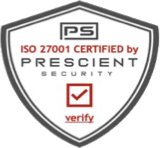Global companies have very complicated organizational structures. Enterprise brands operate using multiple entities and subsidiaries that are all connected under one corporate umbrella. As a practice, entity management requires diligent recordkeeping of minute book records, financial statements, operating data, and all administrative corporate maintenance processes.
Staying on top of all reported recordkeeping duties is a difficult task for your in-house legal team or outside counsel to manage. The process is even more complex, tedious, and time consuming if legal teams are using manual or unconsolidated workflows to maintain those records.
If any of these descriptions sound familiar, it might be time to introduce a more automated entity management workflow to your legal teams. Here are some of the main signs that it’s time to upgrade to an automated entity management solution.
Your records are stored on Excel or Google spreadsheets
Once upon a time, spreadsheets were the innovative entity management solution. By today’s standards, they’re an archaic inefficient workflow that handicaps automation and transparency.
The fact is that spreadsheet files can be accidentally lost or deleted. Storing records in multiple spreadsheets means paralegals must manually search through numerous files if any reporting data is inaccurate. It’s a very inefficient workflow that is a horrible use of your legal talent’s time.
Entity management software automates much of the administrative workload, and the platform’s advanced search capabilities allow teams to find specific records in a matter of seconds. Most importantly, the platform functions as a single source of truth for all entity and subsidiary data, providing a cohesive transparent view of the organization’s legal standing.
You have many versions of saved entity data files
Version control is an important aspect of entity management reporting. Legal teams need to track how changes are made to specific records over time. This is one of the mandatory sequences of any corporate compliance protocol.
If you’re still using manual spreadsheets to report your entity data, you’ve likely saved numerous versions of the same records on your hard drive. Multiply those files for an individual record by the total number of records you manage; if your office computers are really slow, you’ve now identified the reason.
Entity management software automatically notes when any filed records are edited. You also receive notifications on which member of the legal team made those changes, which is a great feature to improve teamwork and collaboration. If there are any questions about the changes, you know exactly who to contact to get the answers.
Implementing corporate compliance protocols is a nightmare
Maintaining compliance with jurisdictional laws is one of the most important responsibilities of any legal or compliance department. However, the laws are constantly subjected to changes and amendments. For example, the SEC in the United States passed a series of new laws to crack down on cybersecurity, which will impact how companies maintain compliance.
If your team struggles to remain ahead of any changes to corporate compliance protocols, it’s probably because your compliance management workflow needs to become more automated.
A lesser known benefit of entity management software is that the platform comes with a built-in compliance framework. The software uses in-platform prompts and notifications to alert your legal team if any data is missing that could risk non-compliance penalties. You can also use the platform to help build an effective compliance program to stay on top of all the requirements.
The company lacks organization and accountability
Suppose there are gaps in reporting data from one of the subsidiaries under the corporate umbrella. To finalize annual filings with accurate information, you need verifiable data to satisfy government regulators.
Who do you contact for clarification about those reporting gaps? If your subsidiary management workflow isn’t structured and organized, your legal department may spend too much time trying to contact the reporting managers for those subsidiaries.
Another benefit of entity management software is that you can build detailed organizational charts directly within the platform. The charts provide a detailed structure of the parent entity’s executive leadership, as well as the managers of each subsidiary. If you have these charts, which are automatically updated when leadership changes are made, simply refer to the platform and reach out to the appropriate manager.
Invest in entity management software and automate your corporate workflows
These are just some of the many benefits of entity management technology, and they’re all designed to help automate your entire approach to entity management workflows.
It’s time to embrace automation and bring your legal entity management reporting processes into the 21st century. Join the MinuteBox revolution for faster, innovative, and transparent approaches to your entity management practices.


